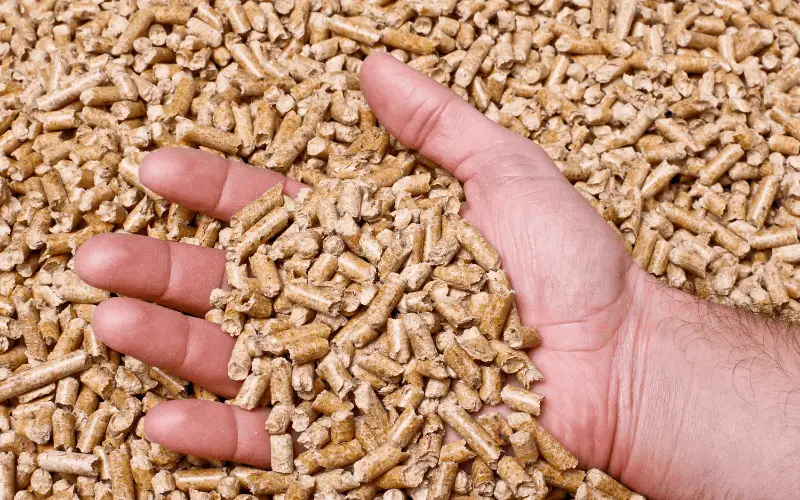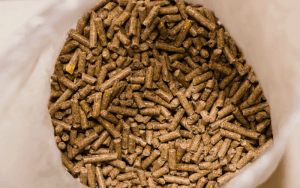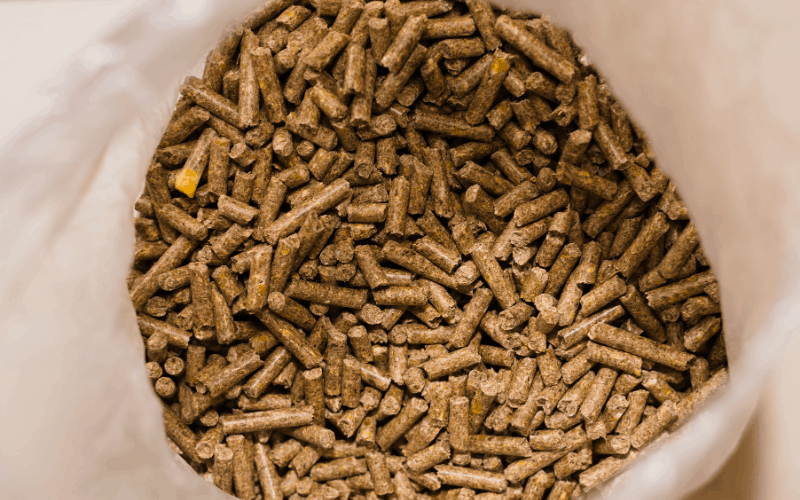Just how much pellets should I feed my guinea pig daily? It is recommended to give guinea pigs pellet-based food measuring 1/8 cup per guinea pig, per day.
Premium quality guinea pig pellets or nuggets are an essential food item in your guinea pig’s diet. It is no secret that guinea pig pellets rich in protein, vitamins, essential nutrients, and fiber keeps your pet’s teeth, bone, and skin healthy.
Good quality pellets alongside fruits, vegetables, and hay provide a balanced diet for your guinea pig. A balanced diet is essential to maintain your guinea pig’s immune system and fight off diseases.
In this article, we have detailed information that’ll help you to know the required amount of pellets a guinea pig needs per day.
Read Also: Do Guinea Pig Need Pellet?
How Much Pellets Should I Feed My Guinea Pig?

Like I said earlier, feed your guinea pigs a pellet-based food measuring 1/8 cup per guinea pig each day.
However, for guinea’s six months old and less, nursing, or pregnant guinea pigs require that you provide them with pellets all day long.
Having pellets available throughout the day may result in exceeding 1/8 cups per guinea pig a day. However, this will not cause any health problems if you stick to feeding them with pellets that contain alfalfa.
It would be best if you feed your guinea pigs who are above six months old with timothy pellets.
Pellets that have a significant amount of alfalfa hold a large quantity of calcium because alfalfa is rich in calcium. Extra calcium is why pellets containing alfalfa is ideal for nursing, pregnant, and young guinea pigs less than six months old.
However, excessive calcium is not ideal for older guinea pigs as it results in the formation of stones inside the guinea pig. These stones are quite painful and often will require a surgical procedure to get them off.
Hence, we recommend that you feed older (above six months) guinea pigs with timothy pellets, this will reduce the likelihood of stones forming.
Finally, ensure that you feed your guinea pig with pellets that are free from junks such as seeds and nuts. These junks can cause the pet to choke while feeding and can also cause obesity.
What Ingredients Should A Good Pellet Contain?
A good pellet should contain 18 to 20% of crude protein, 12 to 15% of natural fiber, and 2 to 4% of fat. Please make sure you use pellets enriched with Vitamin C this is vital because your guinea pigs cannot produce vitamin C.
Therefore, it has to be provided for them daily through their diet through pellets and fresh vegetables to ensure they get a sufficient amount of this essential vitamin.
How to Store Guinea Pig Pellets
The best way to preserve vitamin c enriched pellets is to store them in a cool, dry place. Make sure you seal the box or bag that holds the pellets to retain its freshness.
Improper storage of pellets will result in diminished vitamin C content, therefore pay close attention to how you store your guinea pigs’ pellets.
Also, feeding the guinea pig pellets that are still within the best before date is vital to ensure your pet enjoys the full nutritional benefits it offers.
What Type of Food Bowl Can I Use to Feed Pellets to Guinea Pigs?
The best type of food bowl for feeding pellets to your guinea pigs is a ceramic or stoneware bowl. Also, a non-tip bowl could suffice.
Guinea pigs tend to put their feet on the tip of the food bowls while eating. To prevent the feeding bowls from tipping over, use a non-tip or a stoneware bowl.
How Do I Change the Type of Pellets I Feed My Guinea Pig?

To change the type of pellets, you feed your guinea pigs; slowly introduce the new pellets to avoid the guinea pig from noticing any sudden changes.
Guinea pigs tend to develop a food preference very early in life. They will not accept sudden changes in food appearance, food type, or food presentation easily.
Any sudden modification to their food will result in the pet refusing to eat.
Therefore, if you need to switch the type of pellets, you feed your guinea pig either due to age, pregnancy, or because she’s nursing a baby apply discretion to avoid upsetting your pet.
How Important is Vitamin C in Guinea Pig’s Diet?
Vitamin C is vital for the well being of your guinea pigs. Also, it plays an essential role in the maintenance and development of joints, skin, and mucosal surfaces such as gums.
Vitamin C also plays a crucial role in healing wounds. Insufficient or lack of this vitamin makes the guinea pigs more prone to diseases and predisposes the pet to various forms of skin disorder.
Just like other primates, guinea pigs cannot produce their vitamin C. However, they will have to rely on getting this vitamin from their daily meal. This vitamin can be made available to the pet by feeding them vitamin C enriched pellets, fresh vegetables, and fruits.
There are also some other vitamin C supplements commercially available, however, ensure you consult with a Vet. doctor before using it.
Read Also: How Much Hay Should I Feed My Guinea Pig?
What Are the Symptoms of Vitamin C Deficiency in Guinea Pigs?
Symptoms of vitamin C deficiency in guinea pigs include loss of appetite, rough hair coat, diarrhea, a reluctance to walk, swollen joints or feet, ulcer or bleeding on the skin or gum, appearing to be in pain.
If you notice any of the above symptoms, schedule a visit with the vet immediately.
What Quantity of Vitamin C Is Ideal for Your Guinea Pig Daily?
Guinea pigs require 10 to 50 mg of vitamin C daily; the exact value required will depend on the condition of the guinea pig.
However, a visit to your veterinary doctor will tell you for sure how much vitamin C your pet needs.
Read Also: Why Do Guinea Pigs Need Vitamin C?
What Else Can Guinea Pigs Eat?
If you are looking for more information, walkthroughs and troubleshooting about Guinea Pigs and their diet, here are some additional posts you can check out:
Conclusion
Providing your guinea pigs with the right quantity of pellets will ensure they stay healthy and active. Kindly remember that the nutritional requirement of your guinea pig will vary when she is pregnant or nursing a child and depending on the age.
Ensure you avoid pellets that contain additives such as colorful treats such as chewable candy. These additives look very attractive, but they are not healthy for your pet. Additives such as sugars can cause obesity in guinea pigs, and they can constitute a choking hazard.
Kaytee Timothy Complete Pet Guinea Pig Food

Kaytee Timothy Complete Guinea Pig food was developed by an animal nutrition expert to ensure your small pet gets the proper nutrition for a long, healthy life. Timothy Complete is high in fiber to support digestive health and contains long-lasting vitamin C.
Product SKU: B0002DGIGK
Product Brand: Kaytee Timothy Complete
4.8
Pros
- Recommended by mostly veterinarians
- Very Affordable at reasonable price
Cons
- Poor packaging/easily ripped bag
Oxbow Natural Science Vitamin C Supplement

Natural Science Vitamin C contains high fiber Timothy hay and the stabilized vitamin C that guinea pigs need and other animals benefit from during times of stress, illness, or recovery. Offer Natural Science supplements to support the wellness of your small pets.
Product SKU: B00E0HQA7G
Product Brand: Oxbow Natural Science Vitamin C
4.8
Pros
- Great supplement and good value
- Recommended by mostly veterinarians
Cons
- Hard pellets / difficult to eat
